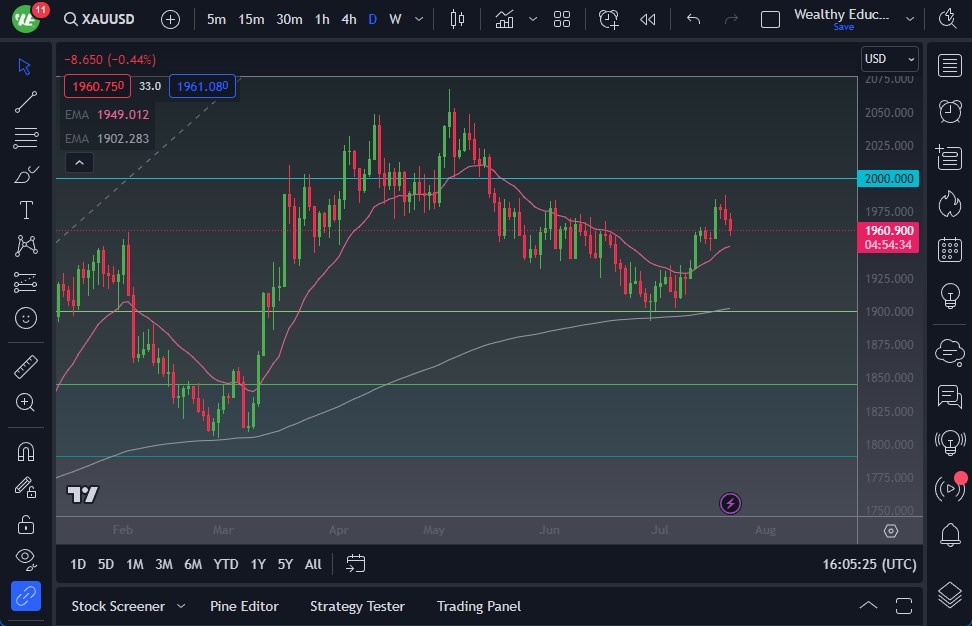The gold market has recently encountered a momentary retreat after a period of bullish pressure, prompting investors to carefully assess the market's recent momentum. As market participants closely observe the movement, the 50-Day Exponential Moving Average has emerged as a potential support level, garnering attention as a crucial determinant in the gold market's trajectory. This article aims to delve into the key factors influencing the gold market, exploring potential breakout levels, support levels, and critical determinants like inflation trends, the performance of the US dollar, and interest rates that could shape gold's future movements.
Top Forex Brokers
Following a successful break above the 50-Day EMA, market analysts noticed the emergence of a potential breakout signal, indicating the possibility of a move towards the psychological $2000 level. If the market manages to surpass the previous Tuesday's candlestick, it could clear the path for further gains, potentially targeting the $2050 level. During the afternoon, buyers exhibited resilience amidst short-term pullbacks, underscoring the prevailing market sentiment. It is important to note that such pullbacks should not be dismissed, as they present lucrative buying opportunities in line with recent market behavior.
- While signs of upward momentum persist in the market, investors are well-advised to exercise caution.
- A breakdown below the 50-Day EMA might lead to a test of the 200-Day EMA, a historically significant support level that carries considerable weight as an indicator of the overall trend.
- A breach below this crucial level would introduce the potential for a substantial downward move, possibly targeting the $1800 level, which played a pivotal role in the previous bullish leg.
As investors navigate the intricate world of the gold market, keeping a watchful eye on inflation trends and the performance of the US dollar is of paramount importance. Historically, gold exhibits an inverse correlation with the greenback, although occasional deviations can occur. Additionally, interest rates play a vital role in influencing gold's movements, as a decline in rates tends to favor the precious metal. Lower interest rates effectively narrow the gap between the storage costs for physical gold and the potential yield from holding bonds, thereby making precious metals like gold more attractive to investors.
Presently, gold markets are consolidating following a period of bullish pressure. The 50-Day EMA continues to offer reliable support, while specific price levels, such as the previous candlestick high and the $2000 mark, hold significant potential for breakouts. Market participants are encouraged to seize opportunities presented by short-term pullbacks, aligning their strategies with the prevailing market trend.
Ready to trade our Gold price forecast? We’ve made a list of the best Gold brokers worth trading with.

